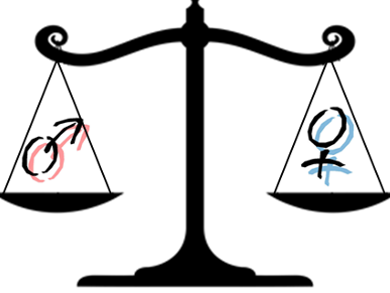March 8th 2016 is International Women’s Day. In celebration of this, Chemistry – A European Journal have published a special issue dedicated to women from around the world currently working in chemical research. The issue features contributions from 17 countries and topics covered range from materials and physical chemistry through to organic and biochemistry. Contributors include the recently elected first female Fellows of ChemPubSoc Europe, Helma Wennemers, ETH Zürich, Switzerland, Christina Moberg, KTH School of Chemical Science and Engineering, Sweden, and Luisa De Cola, ISIS, France.
Gender Parity in the Sciences
The Editorial in the special issue looks at the curent situation of gender parity. Data from United Nations Educational Scientific and Cultural Organization (UNESCO) and the National Science Foundation (NSF) show that, on average, only 28 % of the world’s researchers (Science, Technology, Engineering, and Mathematics (STEM) subjects) are women and that a ‘leaky pipeline’ has been established with women becoming continuously less represented from education right up to high-level positions, such as heads of institutes or departments.
Therefore, greater gender parity in the sciences is needed. To maximize our potential in creativity and innovation we need the best minds on the job, be they male/female or black/white. Accordingly, it is important to ensure that there are no barriers to limit the possibilities for the best candidates to take on high-level research positions.
Different Views on Gender Parity
The Editorial also discusses why women leave scientific research and what can be done to retain them. To answer this question requires stepping outside of emotive arguments and addressing the facts underlying the ‘leaky pipeline’. Key issues involved and strategies to address this problem have been highlighted by four Guest Editorials from chemists: Tom Welton, Imperial College London, UK, Marina Resmini, Queen Mary University of London, Irina Beletskaya, Moscow State University, Russia, and Hildegard Nimmesgern, Chairwoman of the Arbeitskreis Chancengleichheit in der Chemie (AKCC), a working group of the German Chemical Society (GDCh) for more equal opportunities and gender equality in chemistry.
In addition, details of organizations and programs that provide support for women who wish to pursue a scientific career have also been provided.
Chemistry – A European Journal‘s Pledges to Help Increase Gender Parity
In line with this year’s theme for International Women’s Day: Pledge for Parity, Chemistry – A European Journal also makes the following pledges to help increase gender parity in chemistry:
- The journal increased the number of women on the Editorial board from three to five out of 59 members in 2014. The journal recognizes that this number is far too low and will continue to increase it where possible in an effort to move closer towards gender parity at each review of the Editorial board.
- The journal will actively look to increase the number of women involved in the peer review process.
- The journal will continue to profile women in chemistry through its various media channels and highlight their research among its cover features and on ChemistryViews.
- Special Issue: Women in Chemistry,
Chem. Eur. J. 2016, 22 (11). - Editorial: Women in Chemistry – Where We Are Today,
Claire D’Andola,
Chem. Eur. J. 2016.
https://doi.org/10.1002/chem.201600474 - Effect of Structural Modifications on the Self-Assembly of Oligoprolines Conjugated with Sterically Demanding Chromophores,
K. Müllen, H. Wennemers et al.
Chem. Eur. J. 2016.
DOI: 10.1002/chem.201504952 - Biodegradable Peptide-Silica Nanodonuts,
L. De Cola et al.,
Chem. Eur. J. 2016.
DOI: 10.1002/chem.201504605 - Dual Lewis Acid–Lewis Base Catalyzed Acylcyanation of Aldehydes: A Mechanistic Study,
C. Moberg et al.,
Chem. Eur. J. 2016.
DOI: 10.1002/chem.201503782 - Building an Inclusive Culture in the Chemistry Department at Imperial College ,
T. Welton,
Chem. Eur. J. 2016.
DOI: 10.1002/chem.201600475 - The Leaky Pipeline,
M. Resmini,
Chem. Eur. J. 2016.
DOI: 10.1002/chem.201600292 - Is it Easy to be a Woman in Science?,
I. Beletskaya,
Chem. Eur. J. 2016.
DOI: 10.1002/chem.201505051 - Why are Women Underrepresented in STEM Fields?,
H. Nimmesgern,
Chem. Eur. J. 2016.
DOI: 10.1002/chem.201600035
Also of Interest
- Women in Chemistry Interview Series,
ChemistryViews 2011. - Author Profile: Stefanie Dehnen,
Angew. Chem. Int. Ed. 2016.
DOI: 10.1002/anie.201601527
Most recent female author profile in Angewandte Chemie




